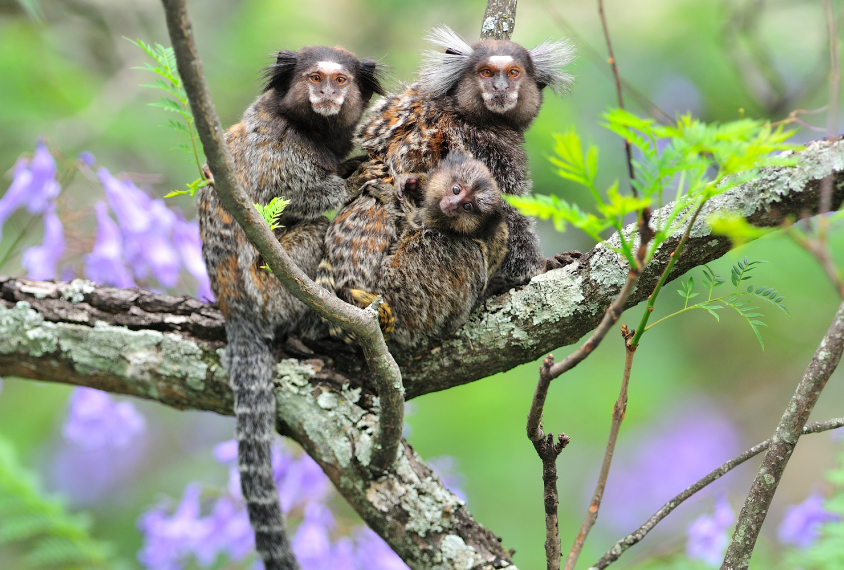
Luiz Claudio Marigo / Minden Pictures
THIS ARTICLE IS MORE THAN FIVE YEARS OLD
This article is more than five years old. Autism research — and science in general — is constantly evolving, so older articles may contain information or theories that have been reevaluated since their original publication date.
Baby marmosets learn to vocalize by mimicking their parents, according to a new study1.
Marmosets are good models of human social behavior. Understanding the basis of their cries may offer insights into the communication problems associated with autism.
For most animals, the ability to make meaningful vocalizations is innate. Children, by contrast, learn to talk based on feedback from others — a process called vocal learning.
Newborn marmosets make chaotic and throaty squeaks, cries and other sounds. As they age, they switch to softer, high-pitched calls called ‘phees.’ Adult marmosets use phee calls to communicate, taking turns as in conversation. But whether the animals learn to make these calls or simply acquire the physical ability to do so with age has been unclear.
In the new study, researchers studied three marmoset families, each consisting of a mother, father and twin babies (marmosets typically have fraternal twins). They gently separated each baby from its parents for 40 minutes nearly every day for the first two months of life, placing it on a foam mat in a clear box containing a hidden microphone. A speaker was positioned behind a curtain in the opposite corner of the room.
For the first 5 or 10 minutes of each session, the researchers recorded the infant’s spontaneous cries for its parents. Then, to initiate vocal learning, they played previously recorded parent responses to the infants.
Adult marmosets typically respond to sounds their infants make after about one second. They have the same response time when communicating with other adults.
The researchers tested whether altering this interval would affect a baby marmoset’s vocalizations. For one twin, they played recordings of parental phee calls one second after its cries. The other twin received fewer responses and variable lag times.
The researchers analyzed changes in the infants’ spontaneous cries over the two-month period. They found that the twin that heard phee calls with the correct timing produced phee-like calls before its sibling. The findings held up even when the researchers controlled for differences in weight gain — a measure of physical maturity — between the twins.
The findings, published 19 June in Current Biology, suggest marmosets learn to communicate through social reinforcement, which further establishes their utility for studying autism.
By joining the discussion, you agree to our privacy policy.